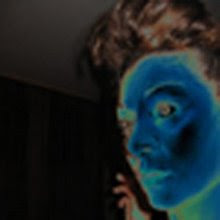
the insect was first identified in this country in allentown, pennsylvania in fall 2001. the extent of it’s range is unknown, but it has since been documented on plant materials in new jersey and on buildings in western maryland as well as in several western pennsylvania counties and parts of west virginia. originally known as a fruit tree and legume pest in its native china, south korea, japan and taiwan, the bmsb eats more than 70 types of ornamental plants and trees such as burdock, empress tree, butterfly bush, catalpa, rosa rugosa, and honeysuckle. also soybeans and the fruit of many pear, cherry, peach, apricot, apple, mulberry, fig and persimmon trees are on the bug’s menu. the list of host plants continues to expand as awareness of the stink bug spreads. the bmsb’s range continues to increase as it flies or hitch hikes on vehicles moving from place to place. because of its diverse appetite and ability to expand both it’s population and range, the potential impact on agricultural crops could be devastating. the stink bug initially feeds on the more common landscape ornamentals, therefore making the home gardener the first to spot new infestations.
the bmsb adults can become a nuisance when large numbers try to over winter in side of houses or other protected areas. they will emerge in april when the weather warms up, and from june to august females lay clusters of 20-30 light green, barrel shaped eggs on the underside of leaves. newly hatched nymphs are yellowish mottled with black and red. the adult insect is about 1/2” long and shaped like a shield with mottled brown coloring. it’s long antennae are banded with alternating light and dark brown. specimens should be positively identified before action is taken, as the bmsb does bear a resemblance to our native Brochymena, a grey-brown stink bug variety without banded antennae.
rutgers university’s cooperative extension is currently conducting a study to determine the bmsb’s rate of infestations in the tri-state area of new jersey, pennsylvania and new york, and is taking reports from anyone in every state who has seen one of the stink bugs. they would love to have a specimen if possible. their stink bug identification information is helpful and can be located at here.
for more info and photographs, visit here.





Good post...what's interesting is the seeming lack of interest in this bug by the Md. Cooperative Extension. A while back, they published a report about it and asked to be notified (and sent a sample, if possible) when one was found in Md., but evidently so many were found in this state, they just stopped taking them.
ReplyDelete